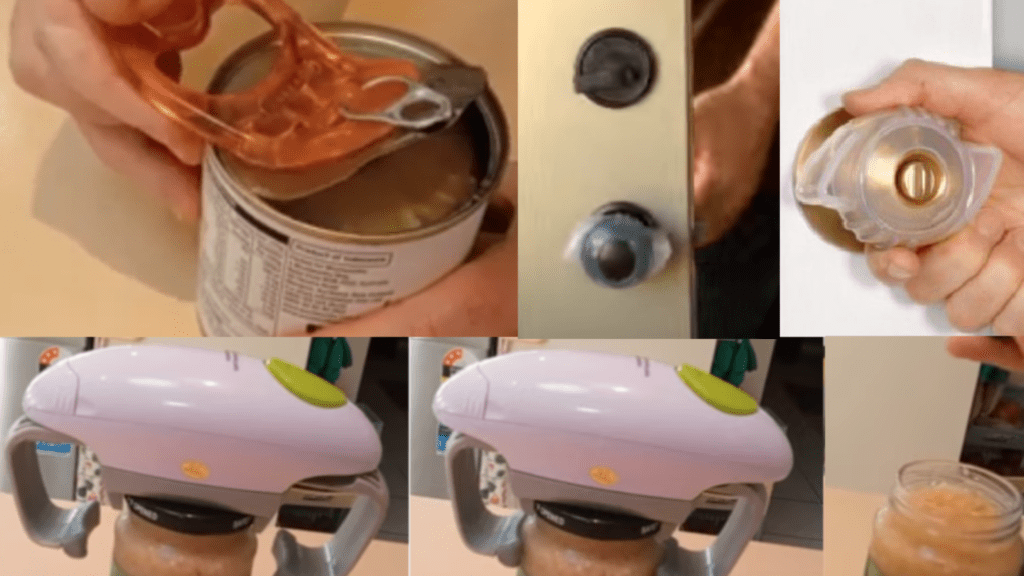Elec Wheelchair & Mobility Scooter Batteries.

There are many different types and configurations of battery-powered wheelchairs and mobility scooters available to us, all at different price points. Naturally, these are all 100% necessary for people with mobility issues, and we rely heavily on these devices having high-quality, long-lasting batteries.
Historically, these mobility aids have been powered by deep cycle Sealed Lead Acid Batteries; (1) AGM (Absorbed Glass Mat) batteries, (2) Gel batteries, and to a lesser degree (3) Lithium-ion batteries which at the moment you’ll only find being used on Electric wheelchairs and not mobility scooters. AGM and Gel Batteries have been and still are quality batteries for use on these mobility aid products. Discussing the batteries used on electric wheelchairs and mobility scooters is the purpose of this Blog article.
The typical range of an electric wheelchair or mobility scooter battery depends on several factors. Factors that affect battery performance when used on Wheelchairs and Mobility Scooters include:
1. The type of terrain you are using the device on (often go up hills etc).
2. The temperature you operate and store the device.
3. Average kms per week you travel using the device.
4. The type of motors that are being used to drive the device.
5. The weight of the device and the weight of the user and how much additional weight you might expect it to carry.
6. How the device has been programmed to operate.
7. How many components are drawing power on the device?
In a nutshell, the battery life of an electric wheelchair or mobility scooter depends on how you use it, where you use it and how you maintain it. To get the most out of your Electric Wheelchair or Mobility Scooter battery, here are a few tips to get maximum life out of the battery.
A. Charge the battery after each use (at least once per week) and only ever use the correct charger that your device came with.
B. Charge the battery of your Mobility Scooter indoors and in a cool, dry room of your house. Electric Wheelchairs need to be charged each night when people have finished using them.
C. Don’t leave your mobility scooter outside in direct sun for any longer than necessary.
D. Leave your device on charge until it’s fully charged wherever possible but also make sure you don’t overcharge it.
The exciting news with batteries that power Electric Wheelchairs and Mobility Scooters is surrounding the advancements with solid state batteries. Each year we are hearing of increasingly more advancements from companies like Toyota, Nissan & Samsung with their development of solid-state batteries.
These companies and others are working on developing lithium-ion, sodium-ion and magnesium-ion solid state batteries. I’m personally excited about sodium-ion solid state batteries as the water cooler conversations about this option suggest that they will be cheap, environmentally friendly, better in extreme temperatures, fantastic range, faster charging and longer life from the current range of liquid state lithium-ion batteries.
The history of AGM Batteries with Mobility Equipment.

AGM batteries are a type of lead-acid battery that absorbs the electrolyte solution between the battery’s plates using a specially constructed glass mat. This one-of-a-kind and intriguing design allows the battery to be totally enclosed and completely maintenance-free. The solution within AGM batteries will never spill out onto you or your floor because they use an immobile electrolyte. The immobile electrolyte used in AGM batteries is fixed in a matrix structure, which makes it suitable for a wide range of applications. The immobile electrolyte used in AGM batteries has been and continues to be used in fuel cells with platinum-containing electrodes. These cells have proven extraordinarily high efficiency under heavy loads.
AGM batteries are inexpensive, and they charge quickly and efficiently. For many years, these characteristics have made them ideal for use in mobility devices such as electric wheelchairs and mobility scooters. AGM batteries are well noted for their fast discharge rate, which makes them ideal for applications requiring a large amount of power in a short period of time. The electrolyte in an AGM battery is absorbed into a glass mat that is put between the battery plates. Even if the battery is tipped over or broken, the glass mat seals the electrolyte in place, keeping it from pouring out. This design also allows users of devices that might end up on their side or upside down by accident as essentially, the battery to be sealed, which eliminates the need for panic about the battery lying in a sideways position, battery maintenance or replenishing the battery with electrolyte.
I believe the main reason AGM batteries have been used in mobility devices for so long and are still used on occasion is because they are lightweight, small, and have a high energy density. When it comes to batteries, high energy density refers to a battery’s ability to pack a lot of energy into a tiny package. A device with a high energy density battery will normally astound consumers, leaving them thinking, “It’s hard to believe such a small battery can pack such a punch.”
I’ve often thought of high energy density batteries when recalling 1970s and 1980s comedy sketches in which a tiny vehicle would park and then about 20 clowns would exit, leaving you wondering, “How is it possible that such a small car could have ever possibly packed in so many clowns?”
AGM batteries are also noted for their long cycle life, which means they may be charged and discharged numerous times without losing overall capacity. Furthermore, AGM batteries are as robust as a Hollywood action hero; they are highly resistant to vibration and shock loads/forces, making them perfect for use in mobility devices that are routinely carried, picked up, dropped down, and knocked around.
AGM batteries are known for their fast charging rates compared to other types of batteries. However, charging AGM batteries at high rates can cause severe wear and very worry heating. Excessive charging rates should be avoided and if anything, should only be used in emergency situations. Overcharging an AGM Battery under certain situations can lead to swelling, otherwise improbably leakage, or even explosions in extreme cases.
If an AGM battery exploded, it would be a very rare occurrence, most likely due to it being overcharged and overheated. No matter how unlikely, an AGM battery exploding would and could cause serious harm to anyone in the vicinity of this situation.
An AGM battery’s overall life can be significantly reduced by either overcharging or undercharging it. Use the smart charger that came you’re your electric wheelchair or mobility scooter, it was designed specifically for the AGM batteries fitted. This is the best way to ensure you are charging your AGM batteries in the safest and most efficient manner. This will help prevent you from overcharging and give you a good long life for your AGM batteries. The smart chargers that came with your electric wheelchair or mobility scooter monitor the battery’s level of charge and automatically adjusts the charging current.
AGM batteries have a high energy density and flammable electrolytes, but they are sealed units with a vent that allows a build up of gasses to escape should the battery develop a defect. Because of their high energy density, AGM batteries have some drawbacks. One of these drawbacks is that AGM batteries are prone to short-circuiting and mechanical stress. If an AGM battery used on your electric wheelchair or mobility scooter was to start to get unusually hot, do not charge it, there’s a chance that it may have developed a short.
Charging an AGM battery fitted to your electric wheelchair or mobility scooters that is defective could be very dangerous as the rapid build up of heat within the battery could cause it to melt or in the worst possible case it could potentially explode. If your battery is defective, it will not be displaying any volts, a good or healthy AGM battery should read a little over 12 volts. If your battery is reading 0 volts, do not charge it and get it replaced. If you’ve had your AGM battery on charge for the normal period of time and they are only reading around 10 volts then there’s a strong likelihood that there’s a dead cell and it will need to be replaced as well.
You don’t need to be scared of your electric wheelchair or mobility scooter batteries, not at all, I’m only suggesting trying to understand them somewhat so you can identify if anything is wrong. You might like to spend a little time becoming familiar with the normal warmth associated with charging your AGM batteries when your electric wheelchair or mobility scooter is still new. It is normal for your AGM battery to warm up slightly when charging and they will get hot if it’s been on the charger for too long. If your AGM batteries become hot whilst on charge just take your electric wheelchair or mobility scooter off the charger for a while and let them cool down. If after it’s cooled down and the voltage is reading ok and you’ve no reason to suspect any battery defect, then just put it back on charge.
Mechanical stress on an AGM battery occurs when forces acting on it cause its shape to deform. Mechanical stress has the potential to damage the internal components of an AGM battery, significantly reducing battery life and performance.
AGM batteries are a lot more resistant to mechanical stress than flooded-cell/wet-cell batteries that you might find being used in a motor vehicle though. Flooded-cell/wet-cell batteries are lead-acid batteries with an electrolyte solution of sulphuric acid and water. These have been used in motor vehicles for many years but are not suitable for use in Electric Wheelchairs or Mobility Scooters and there are many reasons for this.
The history of Gel Batteries with Mobility Equipment.

Gel batteries are sealed lead-acid batteries that discharge slowly, even if you don’t use them for a long time. Gel batteries seem to be a better option for use on an Electric Wheelchair or Mobility Scooter than AGM batteries. A Gel battery that is the same size as an AGM battery will have a little less range than the AGM battery, so they are not perfect.
However, Gel Battery handle being charged better than an AGM battery, they have much better cycling ability and this gives you a battery that will last longer. Gel batteries tend to hold their charge for longer durations than AGM batteries and have an excellent tolerance for extreme hot and cold weather conditions. As with AGM batteries, Gel batteries are also maintenance-free, spill-proof, quite robust and durable.
The history of Lithium-Ion Liquid State Batteries with Mobility Equipment.

Liquid state Lithium-ion batteries are the longest-lasting option for wheelchair batteries and are lighter than AGM or Gel Batteries. Whilst there are plenty of powered wheelchairs now available with Lithium batteries, I’m yet to find a mobility scooter with this option. Initially I thought that the reason for a lack of Lithium Batteries being used in mobility scooters would be cost based. With this in mind I did some online research on the matter and found that the rough cost of a heavy duty deep cycle 100Ah lithium battery can vary from around $600 to $1,000, I found a VoltX 12V 100Ah Pro Plus Lithium Battery with 5 years warrant, 12.8V and with a weight of 13.5 kgs for $749 which I thought was quite good value. I then found a Fusion 12V 96Ah Deep Cycle Gel Battery with a weight of 31kg for $423, you would need 2 of these on most large mobility scooters from what I know, so the total cost is $846.
With only a $97 difference
between the 2 options, I must admit that I’m stumped as to why Lithium
Batteries are not being used on Mobility Scooters. The only thing I can think of is that maybe
you cannot get away with only using one Lithium Battery on a Mobility Scooter
and you need two, in which case I can understand why manufacturers of Mobility
Scooters that can cost over $8,000 in some cases don’t wish to make them any
more expensive by going down the Lithium battery path.









